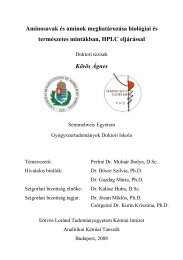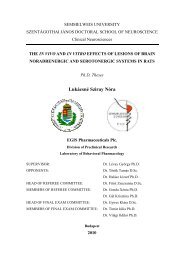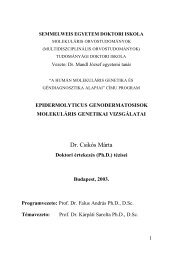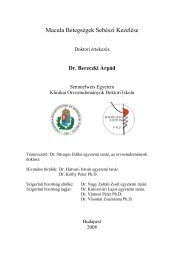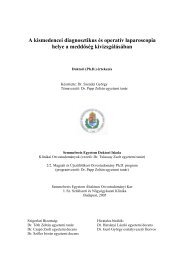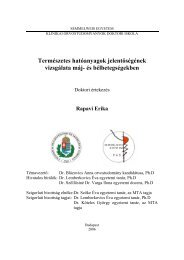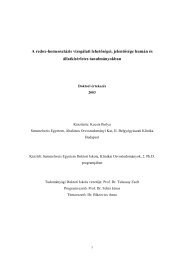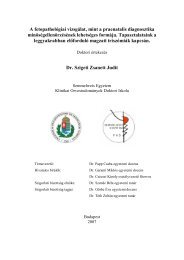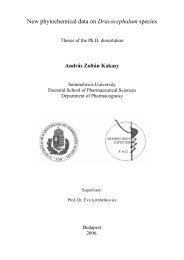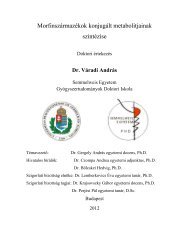János M. Réthelyi MD Semmelweis University, 4th Interdisciplinary ...
János M. Réthelyi MD Semmelweis University, 4th Interdisciplinary ...
János M. Réthelyi MD Semmelweis University, 4th Interdisciplinary ...
You also want an ePaper? Increase the reach of your titles
YUMPU automatically turns print PDFs into web optimized ePapers that Google loves.
2. What is the co-prevalence of depressive symptomatology in the<br />
subjects reporting chronic pain problems?<br />
3. Which sociodemographic factors increase the risk of chronic pain<br />
problems and the comorbidity of chronic pain problems and<br />
depression?<br />
4. In the clinical group of patients with depression what is the prevalence<br />
of pain problems?<br />
5. What factors play a role in the development of pain problems among<br />
depressed patients?<br />
6. In the group of patients with musculoskeletal diseases what is the<br />
prevalence of depressive symptomatology?<br />
7. How can our epidemiological results be used in the preventive and<br />
clinical services?<br />
METHODS<br />
HUNGAROSTUDY 1995 health survey<br />
The analyses and results are based on data from the<br />
HUNGAROSTUDY 1995 national representative survey that was carried<br />
out in the Hungarian population. The investigation included 12.640<br />
individuals above the age of 16 and was conducted by means of a door-todoor<br />
survey. The sample was composed by combining stratified and multistep<br />
sampling procedures.<br />
Chronic pain-associated disability was assessed together with the<br />
shortened form of the Beck Depression Inventory. Sociodemographic<br />
variables were tabulated as well. Results were analyzed as descriptive<br />
statistics, categorical variables were compared by means of the Chi-square<br />
test. Associations between sociodemographic variables and pain-associated<br />
disability and co-occurring depressive symptomatology were calculated by<br />
a multivariate logistic regression analysis.<br />
Young women’s health survey (1998)<br />
The framework of the study was the Young women’s health survey<br />
1998 as part of the Better Health for Women health promotion program<br />
organized by the Institute of Behavioural Sciences (Kopp, 1998). The<br />
sample of the cross-sectional survey included 3615 subjects and was a<br />
representative sample of the population of young women between 15-24<br />
years, selected by a multi-level stratified sampling method. The two major<br />
groups in the sample were young women still studying in secondary school<br />
or higher education institutions (2016 subjects) and the group of young<br />
women not studying anymore at the time of the survey (1599 subjects).<br />
In a list of other health complaints and symptoms interviewees were<br />
asked in the questionnaire whether they have frequently returning<br />
headaches and frequent musculoskeletal pain-problems. Possible answers



